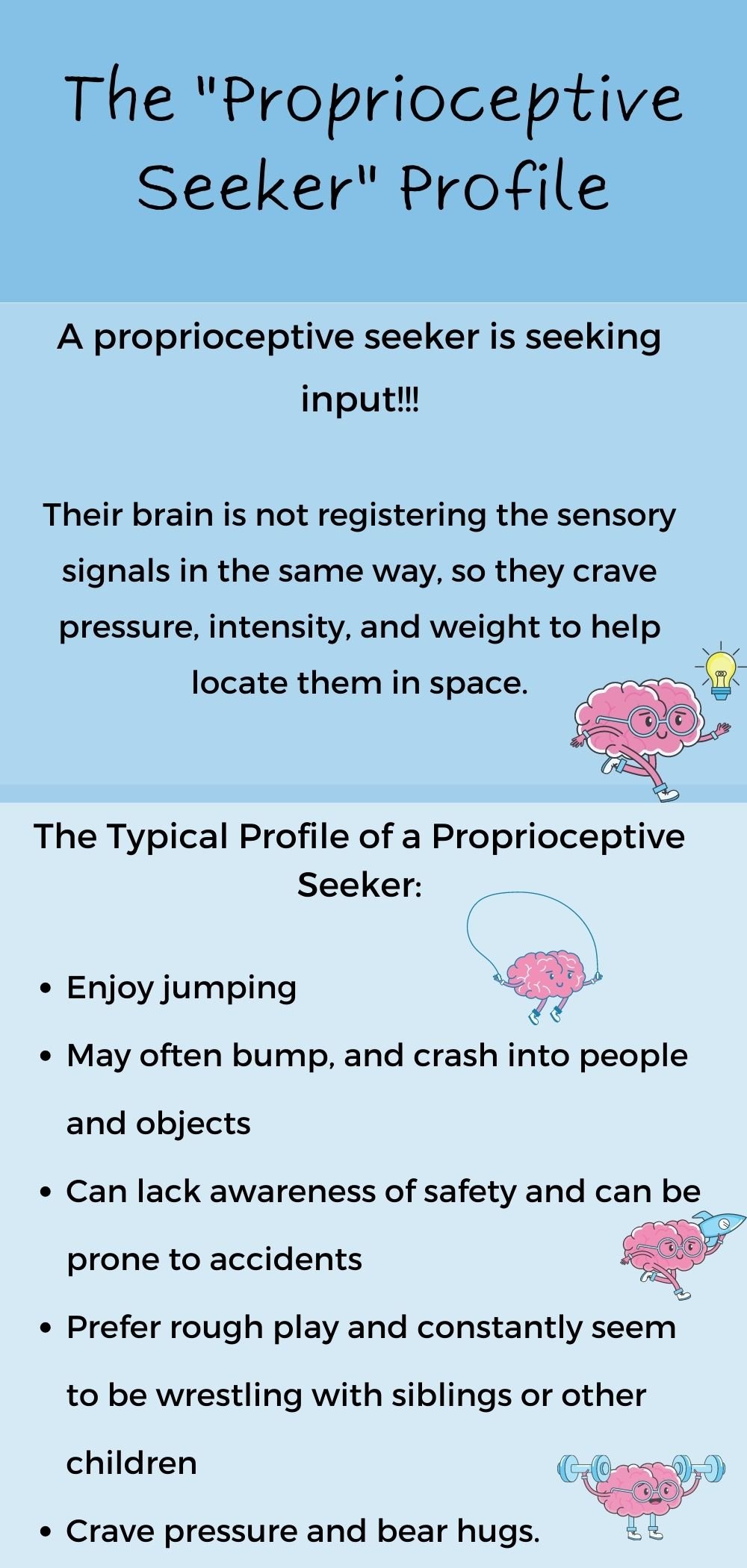Tips and Tools for Supporting Your Child’s Proprioception Needs
(Disclosure, some of the links included in this article are affiliate links).
A few weeks ago, I discussed tips for supporting your child’s interoception. Today, we're back to talk about interoception's sister: proprioception. Interoception relates to how aware we are of what is happening inside the body. Proprioception relates to how aware we are of what is happening outside the body (body awareness).
What is Proprioception?
Proprioception is also one of the eight sensory systems. Sensory receptors in our muscles and joints are responsible for our proprioception. We sense where our bodies are in space through our proprioception system. Our proprioception system senses spaces and detects force and pressure. It helps us locate where we are in space and how to move.
It is common among both ADHDers and Autists to struggle with proprioception. However, one size does not fit all. In the same way, a person may be an under or over-responder to interoception signals; a person may be a proprioception seeker or a proprioception avoider.
Proprioception Avoiders
Proprioception avoiders are highly sensitive to movement and outside input. They are easily overwhelmed by touch and movement.
The Typical Profile of a Proprioception Avoider:
Avoid physical contact (hugs and other types of contact or pressure)
Avoid physical play and appears timid around others
Refuse to play around slides, swings, and other playground equipment
Become anxious in crowded spaces or when standing close to others
Be unable to accurately assess risk in their environment. For example, they may believe they can fall into the small gap between the floor and an elevator.
You can Support Proprioceptor Avoiders by:
Modeling body boundaries and consent by asking for consent before touching/hugging
Talking them through movement and what to expect
Give verbal narratives to help them navigate their surroundings and contextualize the risks. For example, tell your child, “see the gap in the floor by the escalator--it is smaller than your foot. You cannot fall in. Let's step over it together.”
Proprioceptive Seeker
On the other hand, a proprioception seeker is seeking input. Their brain is not registering the sensory signals in the same way, so they crave pressure, intensity, and weight to help locate them in space.
The Typical Profile of a Proprioceptive Seeker:
Enjoy jumping, bumping, and crashing into people and objects–sometimes lack awareness of safety and can be prone to accidents.
They prefer rough play and constantly seem to be wrestling with siblings or other children.
Tend to stand too close to others and touch them without permission.
Crave pressure and bear hugs.
You can Support your Proprioceptive Seeker By:
Encourage safe climbing, jumping, and physical contact games/activities
Provide ample hugs, deep pressure (back massages), physical contact, and play when desired
Giving them push/pull/lift chores--chores that require them to move objects (bringing in groceries), do yard work, and more
Consider incorporating a weighted blanket or weighted lap pad
Encourage play that incorporates movement and activities that stimulate proprioception
Toys and Tools for Proprioception Input
Following are a few of my favorite items that support and encourage proprioception input and integration (disclaimer: affiliate links below). The following items are available for free shipping through amazon family. Use this link to try Amazon Prime for free for 30 days.
Tideer Inflated Wobble Cushion: I see this as a double win. This helps children to focus when they need to sit for prolonged periods while also providing proprioception feedback.
Milliard Peanut Ball: This roller is similar to some of the yoga balls you have perhaps seen. Its peanut shape accommodates children who struggle with balance and core strength. Children can roll or bounce on this, providing both proprioception input while promoting balance and core strength.
Swings: Our family's personal favorite is the swurfer (you can stand or sit on it). We have adapted it for inside use, which works well for our long rainy Oregon winters! The platform swing is another design commonly used among Occupational Therapists.
Bouncing: Jumping and bouncing are great ways of getting sensory input for proprioception-seekers. When my children were young, we got A LOT of use out of our Rody. This is a donkey-sized bouncy toy that allows children to bounce while stabilizing themselves with their feet. Great for children 2-4.
Jumping: For older children, trampolines are a great way of getting their bouncing needs met. If your child is a proprioception seeker, they will get a lot of use out of an in-home or outdoor trampoline.
Crawling: Activities encouraging crawling are also great for developing proprioception and body awareness. Toys like crawling tunnels, ball pits, and more can be fun ways of incorporating proprioception input.
Disclaimer: This content is for educational purposes only and is not intended as a replacement for medical advice or medical support.
This post was proofread by Grammarly, my go-to for proofreading and catching all the details I naturally miss! Grammarly is entirely free to use. Click here to give it a try.




